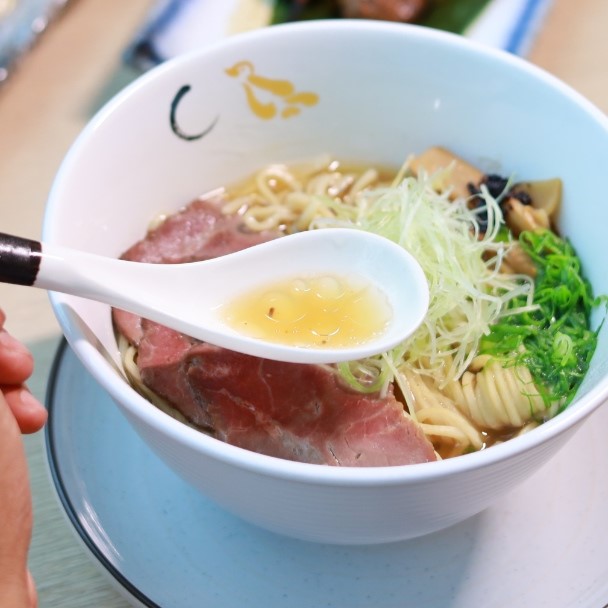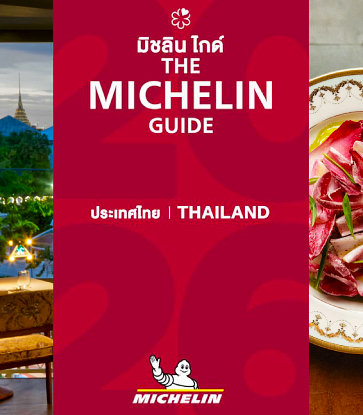Creamy, chewy, salty-sweet and irresistibly photogenic, khao niao mamuang — or mango sticky rice — is Thailand’s most famous dessert for a reason. What started as a humble seasonal treat has become a global sensation, showing up on menus from Bangkok to Brooklyn. Ask anyone to name a Thai dessert, and this one’s top of mind. The best part? It’s easier to make than you’d think.
Here’s how to recreate the magic at home with a recipe from Chef Chumpol Jangprai of R-Haan, a two-MICHELIN-Star restaurant in Bangkok featured in The MICHELIN Guide Thailand 2025, because who says MICHELIN-level desserts are only for dining out?
“The tradition of making khao niao mun — sticky rice gently cooked with rich coconut milk — dates back to the late reign of King Rama II during the early Rattanakosin period,” says Jangprai. “Over time, people began pairing it with different fruits, and it turned out that ripe mango complemented the rice best. It’s traditionally enjoyed in the summer months, when mangoes are at their peak — typically from February to April — but these days, you can find mango sticky rice all year round.”

With its rich, delicate blend of sweet, salty, and creamy flavours, khao niao mun offers a perfect pairing with ripe mango, which brings a gentle tang and fragrant sweetness to the dish. The result is a beautifully balanced dessert that’s both refreshing and indulgent, worthy of its status as Thailand’s most iconic tropical treat.
Jangprai also points out what makes a truly great mango sticky rice. “When making khao niao mun, it’s best to use khao niao kiao ngu, a variety of glutinous rice with long, slender grains. Once steamed, it turns soft and evenly textured, making the finished dish look beautifully appetising. Attention to the cooking method is key — especially when preparing larger quantities. Extend the steaming time to ensure the rice cooks through and achieves the ideal consistency. It shouldn’t be overly sticky, too wet, or too firm. Instead, it should be soft with a slight chew, and the flavour should strike a balance between sweet and savoury.”
“As for the mango, it should be fragrant and sweet, finishing with a gentle tang — not an overpowering sourness.”
Here’s Jangprai’s recipe for making delicious mango sticky rice at home.
Mango sticky rice (serves 1)
Ingredients for khao niao mun (coconut sticky rice):
- 250 grams, glutinous rice
- 150 grams, fresh coconut milk
- 110 grams, white sugar
- 6 grams, salt
- 1 pandan leaf (tied in a knot)
- 1 ripe mango
- 10 grams, crispy mung beans (optional topping)
Ingredients for coconut sauce:
- 200 grams, fresh coconut milk
- ½ gram, salt
- 1 tablespoon, rice flour

Instructions:
- Rinse the glutinous rice under clean water. Add enough water to cover the rice, then stir with alum for about 10 seconds and rinse. Repeat this process three times until the water runs clear. Soak the rice in water for at least 3 hours.
- To make the coconut sauce for the sticky rice, combine fresh coconut milk, sugar and salt in a saucepan over low heat. Stir until the sugar dissolves. Add the pandan leaf. Once the mixture is warm (not boiling), remove it from the heat and let it cool.
- Fill a steamer pot with water up to three-quarters full and bring to a boil. Place the soaked rice in a cheesecloth or muslin-lined steamer basket and steam for about 60 minutes, or until fully cooked.
- While the rice is still hot, transfer it to a mixing bowl and pour over the coconut syrup. Mix well, then cover and let sit for 10 minutes. Stir again to evenly distribute the syrup and let rest for another 30–40 minutes until the rice absorbs the coconut mixture and becomes glossy.
- To serve, plate the coconut sticky rice with slices of ripe mango, drizzle with coconut sauce, and sprinkle with crispy mung beans on top.

The chef’s secrets:
- The glutinous rice used should be fine in quality and texture to achieve that perfect soft-yet-chewy bite.
- For the best flavour, the coconut sauce should be made with fresh coconut milk that is rich, thick and high in natural fat.
- Choosing the right mango is key. Look for one with a golden-yellow hue and just the right level of ripeness. The mango’s flavour and texture can make or break the dish. The chef’s preferred variety is Nam Dok Mai — a type of Thai mango celebrated for its floral aroma and well-balanced sweetness. It should be ripe but not overripe, with a texture that’s both firm and tender.
Illustration image: © Anuwat Senivansa Na Ayudhya/ MICHELIN Guide Thailand










%20-%20Aman%20Nai%20Lert.jpg)
.jpg)





